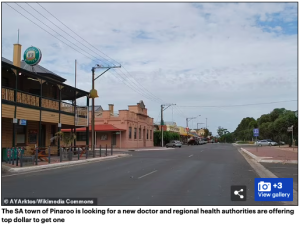Introduction
Australia is widely recognised for its universal healthcare system, Medicare. However, for those living in rural and remote areas, this system often fails to deliver on its promises. Many of these communities face ongoing challenges in accessing even basic healthcare services. According to the Australian Institute of Health and Welfare (AIHW), more than 20% of rural Australians have delayed or missed necessary medical treatment because services were unavailable. This issue is not just about limited access—it points to a deeper, long-standing structural inequality that continues to affect the health and well-being of people living outside major cities.
Background and problem statement
Workforce shortages in rural healthcare have been recognised as a serious national concern for many years, yet effective solutions remain limited. The federal government’s Stronger Rural Health Strategy highlights that regional communities continue to face significant difficulties in attracting and retaining qualified medical professionals. These shortages often result in reduced services, longer wait times, and delayed diagnoses—problems that can be especially dangerous in areas with limited emergency care.
While Telehealth services expanded during the COVID-19 pandemic and offered some support, their impact in remote areas has been uneven. Many communities still lack stable internet access or the necessary technology to use these services consistently. As a result, patients often have no practical alternatives, particularly when ongoing or specialist care is needed. At the same time, healthcare workers in these areas are under increasing pressure, which contributes to high levels of burnout and staff turnover. Together, these factors create a cycle where limited access to care leads to poorer health outcomes, reinforcing long-term inequalities between urban and rural Australia.
Proposed Story Angle and Significance
This article will examine the ongoing shortage of healthcare workers in remote parts of Australia and explore how this issue affects the people who live there. It will consider why it remains so challenging to attract and keep medical professionals in these areas, and what the impacts are—not only for patients but also for the healthcare workers who are left to manage increasing demands with limited support.
The article will also assess whether current government responses—such as rural training schemes and financial incentives—are making a real difference. By combining expert analysis with first-hand experiences, the piece aims to contribute to a broader discussion about healthcare inequality in Australia. It will highlight the belief that access to healthcare should not be determined by where someone lives. Whether in Sydney or a remote community like the Kimberley, everyone should have access to timely and quality medical care.
Interviewees
- Dr Kate Galloway, a researcher focused on regional healthcare systems, provided an analysis of structural issues behind staffing shortages.
- Patient representatives from rural communities to discuss how healthcare shortages affect daily life and long-term health.
- An official from the Federal Department of Health, to respond to questions about policy effectiveness and plans for rural health investment.
Target Publication
This article is intended for ABC News Online, which has a strong track record of covering public interest stories. Its readership includes Australians who care about fairness, policy, and social equity, making it an ideal platform to raise awareness about the crisis unfolding in remote healthcare.




Be the first to comment